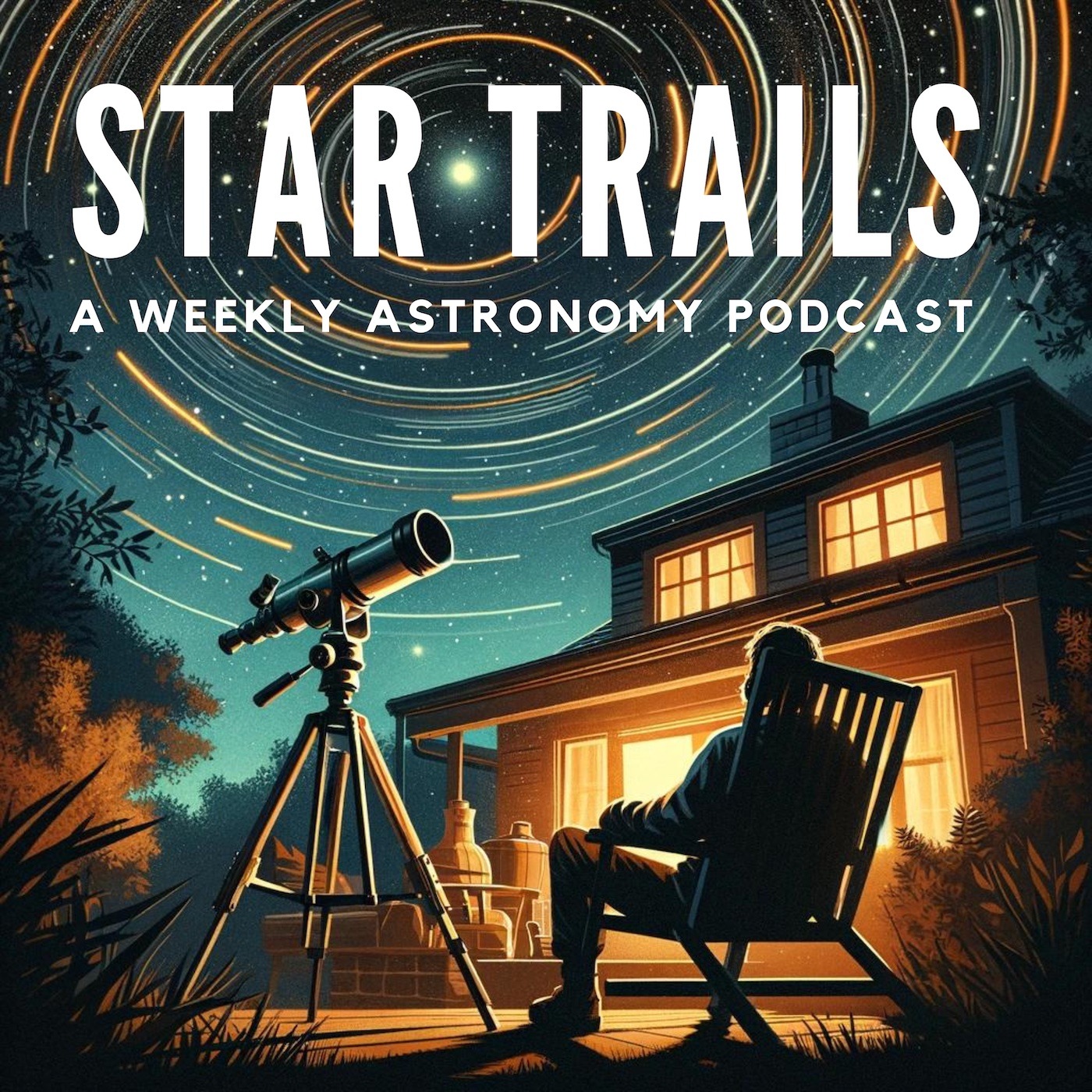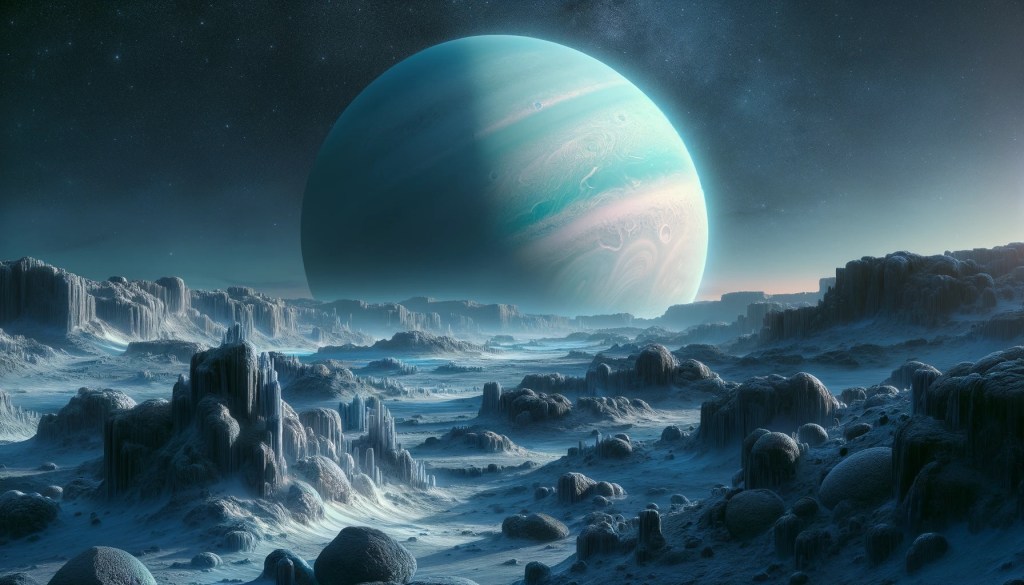
Spring Skies, a Comet Returns, and the Discovery of Uranus – Star Trails: A Weekly Astronomy Podcast
EP8
Join us this week on a celestial journey through the night sky for the week starting March 24, 2024.
Mercury reaches its Greatest Eastern Elongation on March 24, we’ll then dive into the subtle beauty of a deep penumbral lunar eclipse occurring in the early hours of March 25, and we offer up a guide on how to spot Comet 12P/Pons-Brooks.
Also, we look back at a major development in astronomy in the 1700s — the discovery of the planet Uranus.
Transcript
Welcome back, stargazers, to another episode of Star Trails, where we journey through the night sky and discover the wonders above. I’m Drew, and this week, we’re diving into the celestial events and constellations visible starting March 24, 2024. So, grab your binoculars and telescopes, and let’s embark on a cosmic adventure.
First on our celestial agenda is Mercury reaching its Greatest Eastern Elongation on March 24. This is the best time to catch a glimpse of Mercury as it will be at its highest point above the horizon in the evening sky. Look towards the western sky just after sunset to spot this elusive planet.
Jupiter, the gas giant, continues to dazzle in the evening sky, setting a few hours after sunset. Positioned near the Pleiades in the constellation Taurus, Jupiter’s receding brightness still offers a splendid view. Whether you’re observing with your naked eye or through a telescope, don’t miss the chance to catch a glimpse of its majestic bands and moons.
For early risers, the morning sky presents a trio of planets — Venus, Mars, and Saturn. Venus, our sister planet, shines brightly, easily spotted in the eastern sky before dawn. As March progresses, Venus will descend closer to the horizon, setting the stage for its next evening appearance in August.
Mars, the Red Planet, slowly climbs higher each day, though it remains a challenge against the brightening dawn. Observing Mars this week requires a keen eye or the aid of binoculars. Positioned in front of the constellation Aquarius by the month’s end, Mars’s distinct red hue makes it a fascinating object for telescopic observation.
On March 25, we’re treated to a deep penumbral lunar eclipse – but you’ll have to stay up late to catch it. Although subtle, this eclipse will cast a gentle shading across the moon, with nearly all of it immersed in Earth’s penumbral shadow. The peak of this celestial spectacle occurs at 3:12 a.m. eastern daylight time, with the entire event unfolding over nearly 5 hours .
And for those keen on celestial phenomena, from March 27 to April 10, the zodiacal light may be visible after evening twilight. This faint, diffuse light, caused by cosmic dust, is best seen from a dark location and appears to extend up from the horizon in the western sky.
As we near the end of March, don’t miss the moon’s close encounter with Antares in the constellation Scorpius on the mornings of March 30th and 31st. This bright, red star will lie close to the moon, offering a stunning view through binoculars or a telescope. Observers in certain parts of the world will witness the moon occult Antares, an event where the moon passes in front of the star. It wouldn’t hurt to check an app or online resource like Stellarium to see if it’s visible in your area.
Now, let’s talk constellations and deep sky objects. This month, look overhead for Gemini the Twins, featuring the bright stars Castor and Pollux. Under dark skies, you might also spot the open star cluster M35, located near the twins’ feet.
Another highlight is Auriga the Charioteer, with its bright star Capella almost directly overhead. Nearby, you’ll find the asterism known as The Kids, a delightful triangle of stars that’s part of the larger pentagon-shaped constellation.
Comet lovers have another nice target this month – Comet 12P/Pons-Brooks. This intriguing object offers a unique window into the early solar system and is a must-see for amateur astronomers and cosmic curiosity seekers alike.
Known as the “Devil Comet” for its horned appearance, it was discovered independently in the 19th century by Jean-Louis Pons and William Robert Brooks. Its first recorded observation dates back to 1812, with Pons laying eyes on what would later be identified as a periodic comet, weaving through our solar system with an approximate orbital period of about 71 years – similar to Halley’s Comet!
The comet’s appearance provides an excellent opportunity for observers to catch a glimpse of this icy voyager from the comfort of their own backyards. To best observe it in the coming days, you’ll want to set your sights on the dusk sky, especially around March 30 and 31, 2024, when it cozies up within 1 degree of Hamal, the brightest star in the constellation Aries.
While it may be visible to the naked eye under pristine dark-sky conditions, arming yourself with binoculars or a small telescope will enhance your viewing experience, revealing the comet’s coma and potentially its tail in greater detail. Reaching its perihelion on April 21, this comet should be visible high in the sky during the April 8 total solar eclipse, bringing two rare events together in a once-in-a-lifetime celestial dance.
Choosing the right viewing location is crucial—seek out spots away from the glare of city lights and unobstructed by trees or buildings. Remember, patience is key. Give your eyes time to adjust to the darkness, and don’t be discouraged if the comet doesn’t immediately jump out at you. Slow, careful scanning of the expected area will increase your chances of a successful observation.
As this month draws to a close, let’s take the time to appreciate a significant event in the history of astronomy that occurred in March of 1781 — the discovery of the planet Uranus by Sir William Herschel. This discovery was monumental for several reasons:
Uranus is the first planet in our solar system discovered with the aid of a telescope. Prior to this, the planets from Mercury through Saturn were known since ancient times because they could be seen with the naked eye.
The discovery of Uranus expanded the boundaries of the known solar system. Before Herschel’s discovery, Saturn was considered the outermost planet. The addition of Uranus challenged existing models of the solar system and sparked further research into celestial mechanics and the potential for other undiscovered planets.
Herschel’s discovery was also a testament to the advancements in telescopic technology at the time. Herschel, a skilled telescope maker, used a telescope of his own design and construction to observe Uranus, which he initially thought was a comet before realizing it was a planet.
The discovery of Uranus had a profound impact on the field of astronomy, encouraging further exploration of the outer solar system. It eventually led to the discoveries of Neptune and Pluto and to the development of better instruments and methods for observing celestial bodies.
Thank you for joining us on this episode of Star Trails. As we continue our cosmic voyage, let’s remember to look up and wonder at the marvels above, embracing the mysteries that the night sky holds. Until next time, keep exploring, dreaming, and wondering! I wish you clear skies and happy stargazing!


Leave a comment